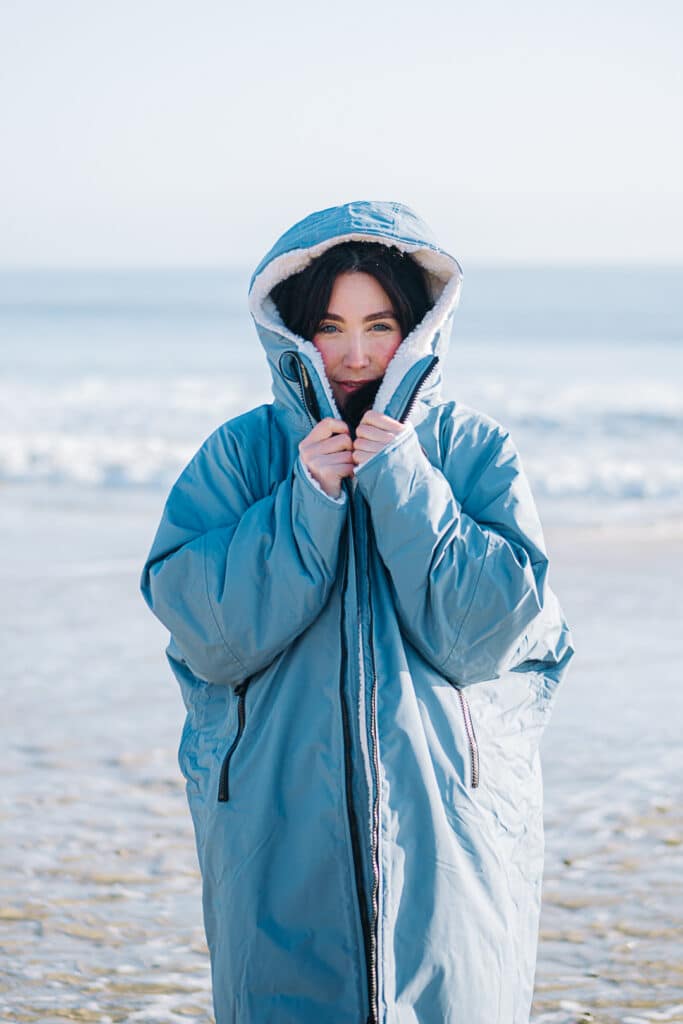Our Outdoor Instructor Trainees are half-way through their winter training. The recent wind-chill factor has meant that 7 degrees has felt more like -1 degrees, particularly down at Dancing Ledge during their climbing sessions. Staying warm is crucial for the trainees concentration, enjoyment and preventing injury.
Here’s some sound advice our coaching team gives to trainees about staying warm for prolonged periods outside:
Tips for staying warm:
- Get organised
Rushing out the door is always going result in forgetting something. Lay out all you kit before you pack it and ensure all the essentials are there including food and clothing items. Don’t be that person who has to borrow your mate’s kit – not cool. - It’s all about the base
Our instructors are always layered up. Start with a good base layer – that means top and bottom. We really rate base layers made from merino wool. They’re breathable, warm and don’t smell as bad as the synthetic base layers. Icebreaker do a great range of merino base layers – they’re a company with a passion for sustainability and quality – something we really admire. - Waterproofs act as a great windbreak
Even on dry days, pack your waterproof. It acts as a great barrier on windy days and should fit over a couple of fleecy layers or a down jacket. A cold wind can drive through the fanciest of down jackets, so build up your barriers. Waterproofs are lightweight and pack down small, so there’s no excuse not to chuck one in your bag.
- Get Down with the kids? Or get Fleeced?
Down jackets are great, there’s no doubt about that, but they’re also bloody expensive! If you’re just starting out in the outdoor industry, then wearing a couple of good fleeces under a regular jacket can be just as effective. You don’t need to spend loads of £ to stay warm, it’s just about sensible layering. Decathlon do a great range of low-cost down jackets for around £40, if you’re looking for a cost-effective way to stay warm. - Don’t save your warm stuff for later
Don’t let yourself get cold before putting on more layers. Being mindful of your comfort level and stay warm from the get-go. As soon as you’re cold your body will be fighting to warm up, which results in loss of concentration. - Food & flasks
You burn more energy in the cold. Add that to any physical activity you’re performing and you really start firing through some calories. Pack high-energy foods to keep your body fuelled all day. A flask is an absolute must, whether it’s tea, hot chocolate or hot squash. Believe us, you will thank yourself for taking the time to boil the kettle and getting prepped.
- Fingers and toes
Our instructors never scrimp on socks. Good quality socks are worth splashing out on. Take spares if it looks like it might rain. Ensure you waterproof your walking boots regularly. When it comes to gloves, your choice depends on the activity. Mittens keep your hands really warm, as the body heat in each of your fingers rubs together keeping each digit super toasty. You can also get glove / mitten combinations, whit isolate just the index finger and thumb so you can use them for tasks such as holding maps etc, while the rest of your fingers have a party altogether in the other section.
- Movement
It’s pretty obvious, but keeping moving will keep your body working and help with staying warm. If you stop for lunch and need to sit down, then use something like your rucksack / your map or another layer to sit on, rather than plonking your bottom straight onto a cold rock. A good warm up session is especially important before doing anything physical in the outdoors. The helps prevent muscle-related injury. - Use your head
Hats are a must, as you lose heat through your head. If you’re climbing and are wearing a helmet, then a buff can be worn underneath. We love the buffs that have a fleecy end and a cotton end, which provide extra warmth around the neck.
- Hypothermia – know how to act fast
Hypothermia is a dangerous drop in body temperature below 35C. It can be caused by inadequate clothing in cold weather, falling into cold water, being very tired and cold. You should treat Hypothermia by removing wet or sweaty clothes, wrapping the person in blankets or layers, giving them a warm drink and high energy, sugary food such as chocolate. Don’t let the person lie directly on cold ground; place something beneath them. Never give a hypothermic person alcohol or massage their limbs – this can lead to cardiac arrest. Find out more about Hypothermia on the NHS website HERE
If you want to join our winter Outdoor Instructor Training programme for 2019, you can find out more HERE. Our trainees have the opportunity to make the most of our excellent kit package, which includes all the must-haves to keep you warm, dry and comfy during your training and beyond.

21 December 2018 by Rosie Tanner





